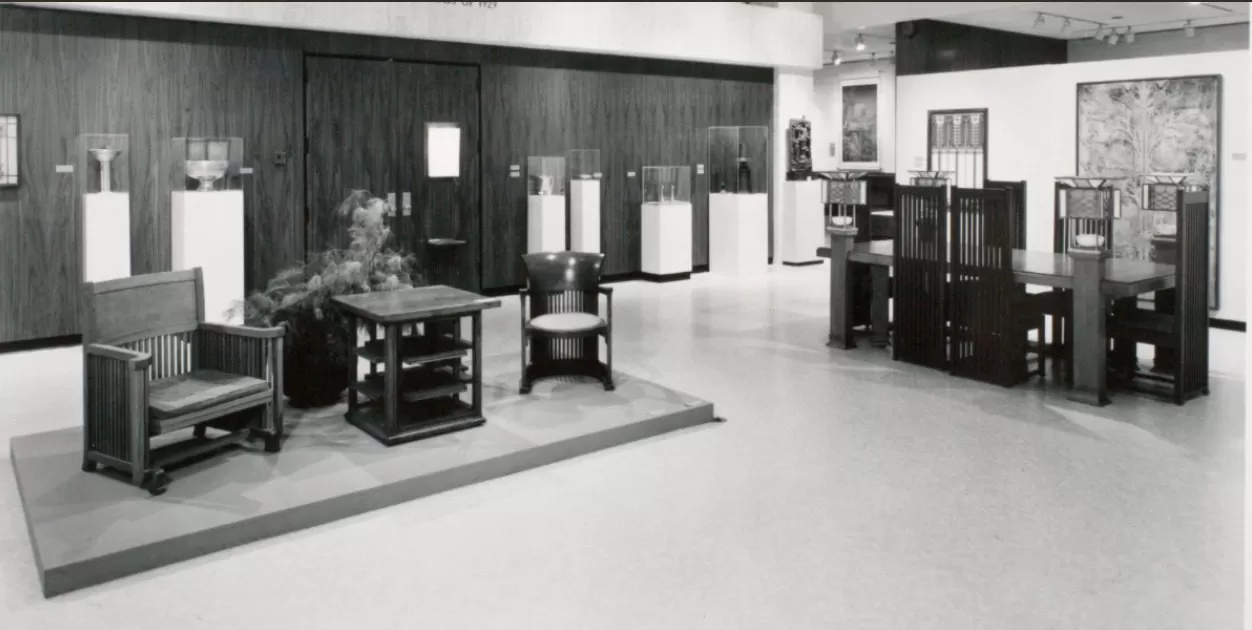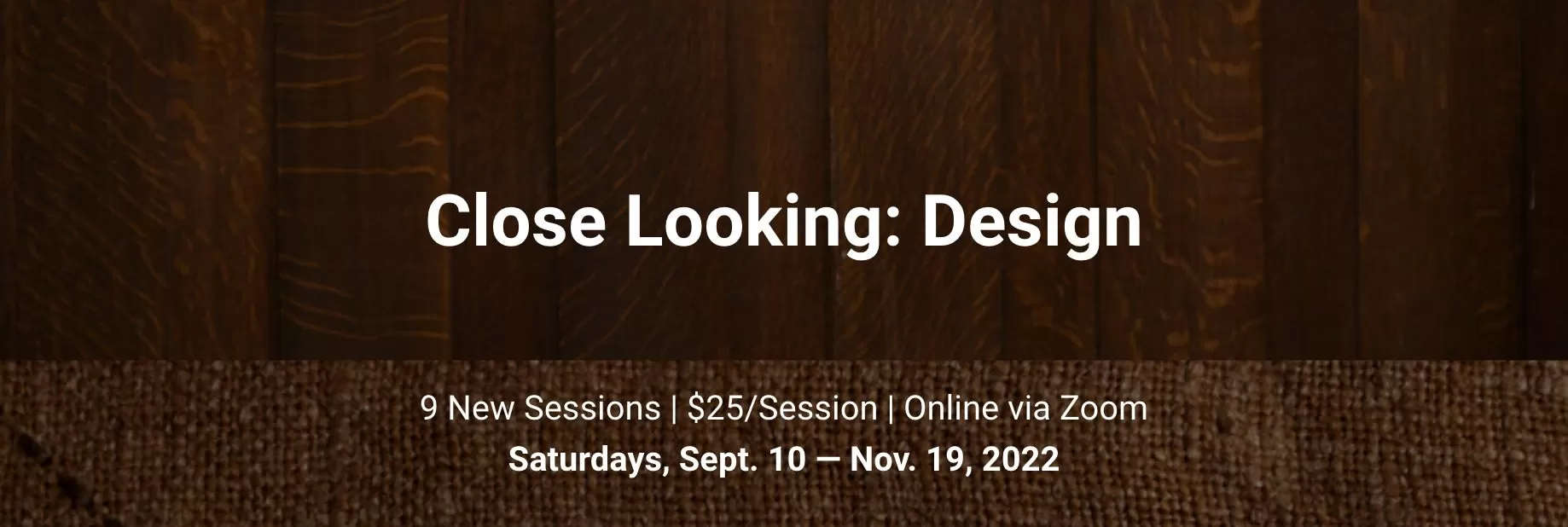Stickley Museum Celebrates Robert Judson Clark’s Legacy 50 Years Later
by Kate Nixon
The upcoming Fall months look to be busy for the Stickley Museum at Craftsman Farms. With a 50th Anniversary celebration of a famous Arts and Crafts exhibition, a new series of online classes and the return of an annual fundraiser coming around the corner, the New Jersey-based organization continues to speed ahead with fundraising efforts to restore Gustav Stickley’s log house kitchen and the reconstruction of the Annex all while providing a robust educational celebration of the exhibition that kicked off a revival and brought the importance of Stickley’s furniture and the Arts and Crafts movement back to the public eye. With online offerings with prestigious guest speakers, the Arts and Crafts momentum has sped up and just might land in time for the return of the organization’s annual in-person fundraiser The Craftsman Gala.

The above photo is a view of the 1972 exhibition at the Princeton University Art Museum. Often simply called the “Princeton show,” it was formally titled, “The Arts and Crafts Movement in America, 1876-1916.” The exhibition ran from October 21 to December 17, 1972.
Photo credit: courtesy Princeton University Art Museum.
In 1972, Robert Judson Clark’s 1972 exhibition “The Arts and Crafts Movement in America, 1876-1916,” and the accompanying catalog, with contributions by David Hanks and Martin Eidelberg, brought the movement back into the public eye, transforming the field from niche interest of collectors and scholars into a force that would prove the movement timely and appealing to a larger crowd, resulting in the modern day growing revival. Major figures of the movement–and Gustav Stickley in particular–went from forgotten footnotes of history to near household names driven by the momentum for more information created in the wake of the “Princeton show.”
As the work of Gustav Stickley was given the spotlight once more as a result of this exhibition that sparked a revival, the 50-year anniversary of the exhibition will be celebrated once more and the Stickley Museum at Craftsman Farms is leading the charge. With three online programs all inspired by the “Princeton show” in August, October, and December. Exclusively for Stickley Museum Members, these free (with RSVP) programs are generously sponsored by Rago/Wright/LAMA Auctions.
Thursday, October 20 via Zoom at 6:30 pm EST
Panel Discussion, The Arts and Crafts in America, 1876-1916 Catalog and Exhibition
with:
Martin Eidelberg,
Emeritus Professor, Rutgers University
Alice Cooney Frelinghuysen,
the Anthony W. and Lulu C. Wang Curator of American Decorative Arts at the Metropolitan Museum of Art
and Jonathan Clancy,
Director of Collections and Preservation
Additionally, the Stickley Museum will have a Zoom session December 15th on the Arts and Crafts furniture featured in the 1972 exhibition with special guest Karl Kusserow, the John Wilmerding Curator of American Art at Princeton University Art Museum. The session’s title, “An Almost Infinite Variety of Material Production,” refers to a comment made by Irene Sargeant of The Craftsman fame on Stickley’s 1903 Syracuse exhibit, describing an American reaction to the furniture. The Princeton show truly started the modern influence of Arts and Crafts furniture in America and this exploration of the furniture in the show shows the importance craftsmanship and design over style.
Thursday, December 15 via Zoom at 6:30 pm EDT
Lecture: “An Almost Infinite Variety of Material Production”: Furniture in the 1972 Princeton Exhibition
Presented by Jonathan Clancy,
with Special Guest: Karl Kusserow, the John Wilmerding Curator of American Art at Princeton University Art Museum.

Starting September 10th, Jonathan and Vonda return to the Zoom classroom with online classes continuing the Close Looking: Design series on Case Furniture, Textiles and the Fiber Arts and Tables and Stands.
Continuing the Close Looking series from earlier in the year, the second chapter continues the exploration of great design, found in the subtle arrangement of forms that causes “an aesthetic arrest in which the mind…is raised above desire and loathing.” Focusing on the aesthetics of objects will help students to further understand the history of design; each session will feature an examination of ten objects that will reveal the process of choices designers make and how these choices shape design. As instructor Clancy says, “The goal is to get you to look more closely and think more carefully about function and aesthetics, while expanding your knowledge of design history from the distant past to the present day.”
